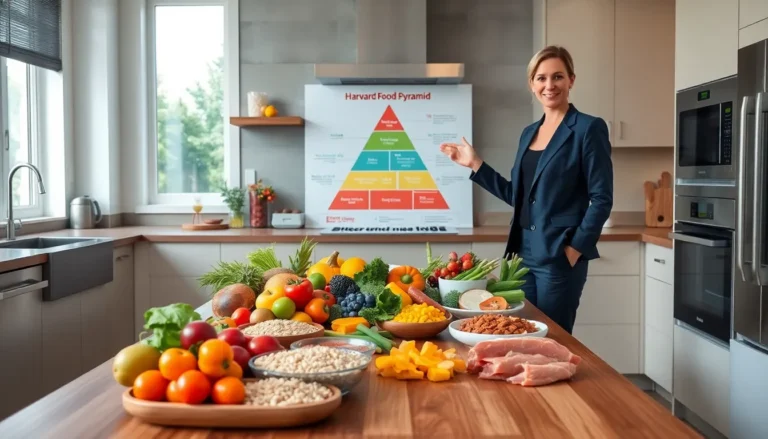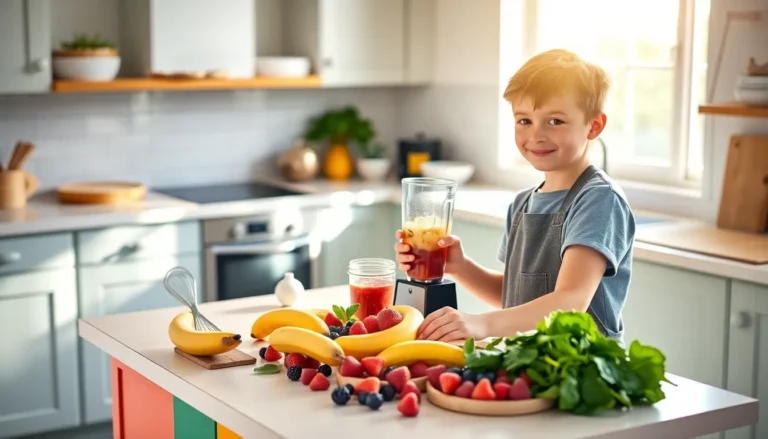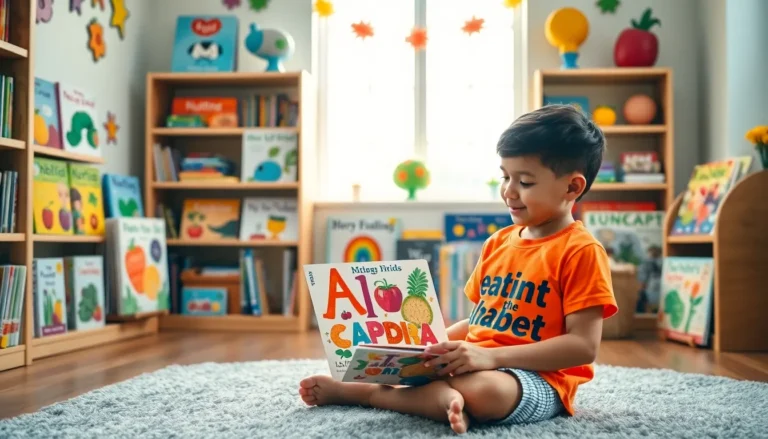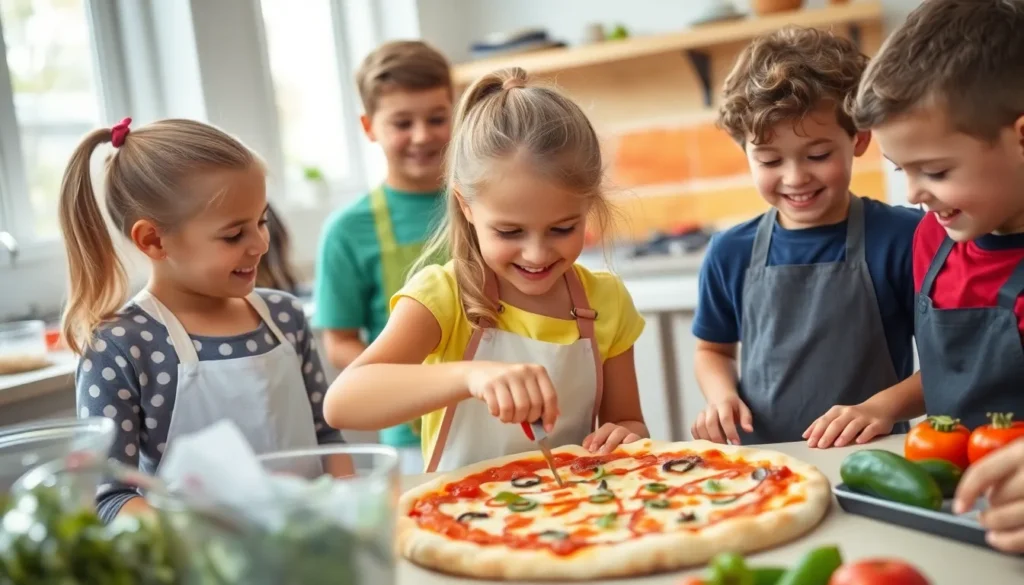Table of Contents
ToggleImagine a world where kids swap video games for aprons and spatulas. Culinary classes for kids are not just about stirring pots; they’re about sparking creativity, building confidence, and perhaps even creating the next culinary genius. These classes turn the kitchen into a playground, where little chefs learn to whip up everything from gooey chocolate chip cookies to savory pasta dishes.
Overview of Kids Culinary Classes
Kids culinary classes provide a unique opportunity for children to explore the world of cooking while developing essential skills. Engaging in these classes facilitates creativity, allowing children to experiment with flavors and presentations. Various dishes, such as pizzas, pastas, and pastries, serve as practical examples where they can apply what they’ve learned.
Participants often benefit from hands-on experiences. Each class typically includes guided instruction to ensure safety and technique. Group activities foster teamwork, encouraging kids to collaborate effectively in the kitchen. Many culinary programs also incorporate lessons on nutrition, teaching children the importance of healthy eating habits.
Skill development remains a central focus. Young chefs practice knife skills, learn to measure ingredients accurately, and understand cooking times and temperatures. Feedback from instructors helps them refine their techniques and build confidence.
Classes vary in intensity and focus, ranging from simple recipes to more sophisticated cuisine. Some programs even offer themed sessions, such as international cuisines or seasonal celebrations. Kids can attend classes after school, on weekends, or during the summer, making it easy to fit into their schedules.
Overall, kids culinary classes combine learning and fun, enabling children to create delicious meals while gaining valuable life skills. These programs not only prepare young chefs for future culinary endeavors but also cultivate a lifelong appreciation for cooking.
Benefits of Enrolling in Culinary Classes
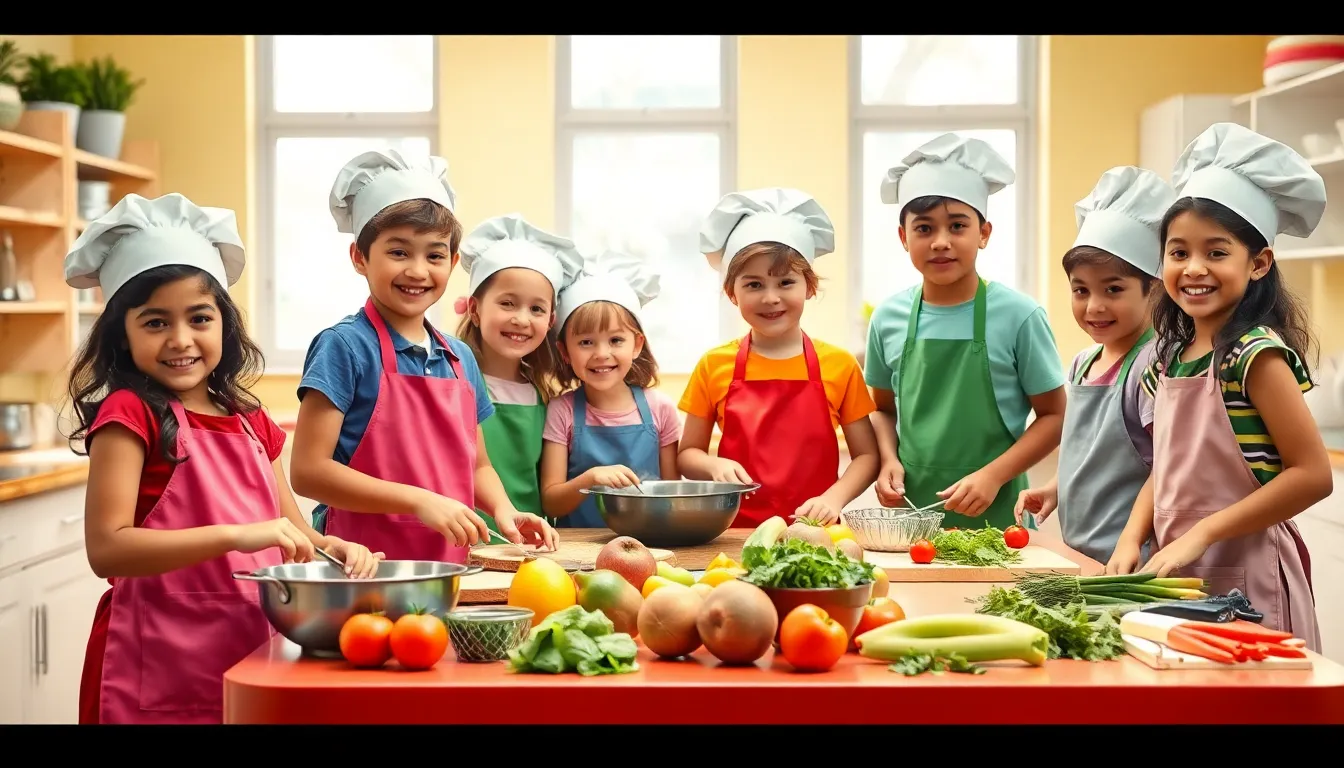
Culinary classes for kids offer numerous advantages that extend beyond just cooking. Young chefs gain practical skills while having fun.
Skill Development
Skill development ranks high in culinary classes. Students learn knife skills, measuring techniques, and cooking temperatures. Instructors provide real-time feedback to refine these abilities. Children practice in a hands-on environment, reinforcing their learning. The mix of simple recipes and more sophisticated dishes keeps them engaged. As their familiarity with cooking increases, so does their proficiency. Specialty themes, such as international cuisines or holiday meals, enhance their experience.
Confidence Building
Confidence building plays a crucial role in culinary classes. As children master new recipes, they gain a sense of achievement. Successful preparation of meals leads to pride in their culinary abilities. Collaborative group activities foster teamwork and boost self-esteem. Overcoming cooking challenges nurtures resilience, allowing kids to tackle future goals. Encouragement and positive reinforcement from instructors further enhance their confidence. Ultimately, kids leave these classes ready to take on new adventures in the kitchen.
Factors to Consider When Choosing a Class
Choosing the right culinary class for kids involves several important factors. Each aspect significantly influences the overall experience and learning outcomes.
Age Appropriateness
Age appropriateness is key in selecting a culinary class. Classes designed for younger children typically focus on basic skills like mixing and measuring, while older children’s classes introduce more complex techniques. Programs that cater to specific age groups engage participants through age-appropriate recipes and activities. This consideration ensures that children remain challenged without feeling overwhelmed. Look for classes that clearly define their target age range to match the child’s developmental stage.
Class Size
Class size plays a crucial role in the learning environment. Smaller class sizes allow for more personalized attention, fostering a better learning experience. Instructors can offer tailored guidance when classes maintain a lower student-to-teacher ratio. This individualized feedback helps children refine their skills more effectively. Larger classes may create a fun atmosphere but can limit interaction with instructors. It’s essential to consider the balance between social interaction and individualized teaching for an optimal culinary education.
Popular Kids Culinary Classes
Many options exist for kids interested in culinary classes. Cooking schools and community centers frequently offer engaging programs tailored to various skill levels. Focus areas for these classes often include baking, knife skills, and international cuisines.
Cooking with Kids provides an interactive atmosphere where children learn through fun activities. Classes feature recipes like homemade pizzas or colorful cupcakes, engaging young chefs while teaching them essential cooking techniques.
Little Chef School emphasizes hands-on experience. Participants often create dishes from scratch with guidance from experienced instructors. Nutritional education forms a significant part of the curriculum, teaching children the importance of healthy ingredients.
Sur La Table offers workshops that cater to different ages and interests. Kids can explore international flavors through themed sessions such as Italian pasta-making or Japanese sushi rolling. These classes encourage a global perspective on food and cooking.
Chefs for Kids delivers gourmet classes that inspire little culinary enthusiasts. Participants tackle challenging recipes like souffle and macarons, allowing them to develop advanced skills while building confidence in their cooking abilities.
Local community colleges sometimes host culinary camps for kids. These programs immerse participants in culinary arts, including food safety and kitchen management principles. Exposure to various cooking methods broadens children’s horizons and enhances their culinary knowledge.
Finally, virtual culinary classes have gained popularity, especially post-pandemic. Online sessions allow children to join from home while still interacting with instructors. Technology integration helps bridge gaps, ensuring kids stay engaged no matter their location.
Selecting the right class depends on the child’s age and interests, ensuring they find a program that resonates with them. With numerous options available, kids build cooking skills while having a great time in the kitchen.
Kids culinary classes offer a vibrant pathway for young learners to explore the culinary arts. These experiences not only teach essential cooking skills but also encourage creativity and confidence. As children engage in hands-on activities and collaborative projects, they develop a sense of accomplishment that extends beyond the kitchen.
With diverse options available from local cooking schools to virtual classes, parents can find the perfect fit for their child’s interests and abilities. Investing in culinary education prepares children for future culinary adventures while fostering a lifelong love for cooking. Embracing these opportunities can truly transform a child’s relationship with food and cooking.

